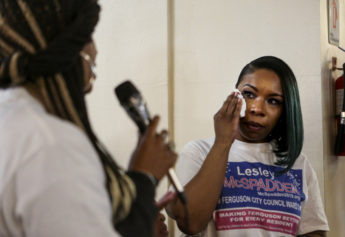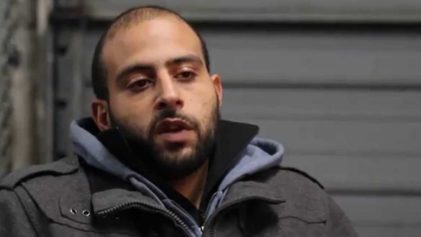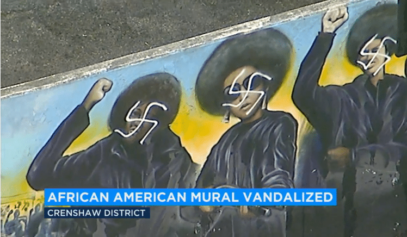Observing all of the activity coming out of the U.S. Department of Justice these days, it seems the feds are now in the business of cleaning up police departments or at least telling the police about their business. Will things change as a result, and should the community play a more active role in policing?
The DOJ investigated the Cleveland Police Department and released a report that found that the police had a pattern of using unreasonable and unnecessary force in violation of the Fourth Amendment, including deadly force, Tasers and chemical spray, excessive force against the mentally ill and dangerous tactics that place civilians and officers at risk. The feds told the Cleveland police to stop beating people upside the head with their guns.
The report comes on the heels of other reports, on the rampant racism and brutality in Ferguson, Missouri, whose city government has operated a revenue generating scheme based on the exploitation of poor Black people through fines and arrests. As for Baltimore, the DOJ announced a federal civil rights investigation into that city’s law enforcement practices. Then there is Philadelphia, where the agency released a report condemning the city’s police department for its deadly force practices and policies, including faulty training and supervision.
This is headed somewhere, but exactly where? How many more Fergusons do we need? Now we see that cities are engaging in damage control and riot prevention, and breathing a sigh of relief when a white man, rather than a Black man or woman, is shot by police. But are these police departments concerned about addressing the root problem, or intent upon window dressing as they remain in the dark and continue to engage in their dirty deeds?
The larger issue is, given what we know about other cities across the nation, it’s time for the federal government to start investigating all police forces or require, as some suggest, uniform standards for all law enforcement across the country? Better yet, does the community need to do its own policing, or the policing of the police, in the spirit of the Black Panthers?
Vanita Gupta, President Barack Obama’s new head of the DOJ’s Civil Rights Division, said it best when she attributed the unrest in Ferguson and Baltimore to the legacy of slavery and Jim Crow. Certainly, this is a good starting point in order to address the situation of police in Black communities. After all, we need to examine the origins of the police — which for the working poor originate in the goon squads, the muscle hired by the business bigwigs to crush organized labor. As for Black people, their first experience with the cops were the slave patrols that enforced the antebellum police state. So, from Day 1, police — in collaboration with the Ku Klux Klan and the lynch mob — were designed to terrorize and criminalize the Black community, which is why being Black in America has meant navigating through life under a constant threat of death.
Malcolm X said it best when he called the Black neighborhood a police state, and “the most heavily patrolled” community:
The controlled press inflames the white public against Negroes. The police are able to use it to paint the Negro community as a criminal element. The police are able to use the press to make the white public think that 90 percent or 99 percent of the Negroes in the Negro community are criminals, and once the white public is convinced that most of the Negro community is a criminal element, then this automatically paves the way for the police to move into the Negro community exercising Gestapo tactics, stopping any black man who is on the sidewalk, whether he is guilty or whether he is innocent, whether he is well-dressed or whether he is poorly dressed, whether he is educated or whether he is dumb, whether he’s a Christian or whether he’s a Muslim, as long as he is black and a member of the Negro community the white public thinks that the white policeman is justified in going in there and trampling on that man’s civil rights and on that man’s human rights.
Brother Malcolm sounded as if he had visited Ferguson or Baltimore in 2015, but, more importantly, the insidious conditions that created Ferguson have not abated but rather have remained the same. Meanwhile, what is the solution, community policing? Community policing — the notion that police are a partner with the community, emanate from the community, walk the streets and know everybody on the block — has potential, provided the police are not seeking a way of getting closer to the Black community in order to better infiltrate and disrupt us, as in the days of FBI director J. Edgar Hoover and COINTELPRO.
Policing must either be reinvented or abolished rather than tweaked at the edges. Some form of community oversight and accountability, that is, policing the police, is in order. The Black Panther Party had the right idea with its citizen patrols monitoring the police and resisting police brutality. The black leather jackets and berets made for good optics in the Black community, and their bold stance on protecting the community from police oppression placed them on an equal footing with the cops. Further, their positive presence in the neighborhood and their social service programs had an impact, so much so that Hoover called the Panthers’ free breakfast program the “greatest threat to the internal security of the United States.” It is for that reason — not to mention the negrophobic hatred of an FBI director who was apparently passing for white — that the Panthers and other Black organizations had to be eliminated.
If some aggressive steps are not taken today, then we will return a decade or two from now, and psychopaths and domestic abusers in blue uniforms will continue to prey upon us. Our children will continue to die in the streets, and we will wonder why the problems in our community have not subsided.



